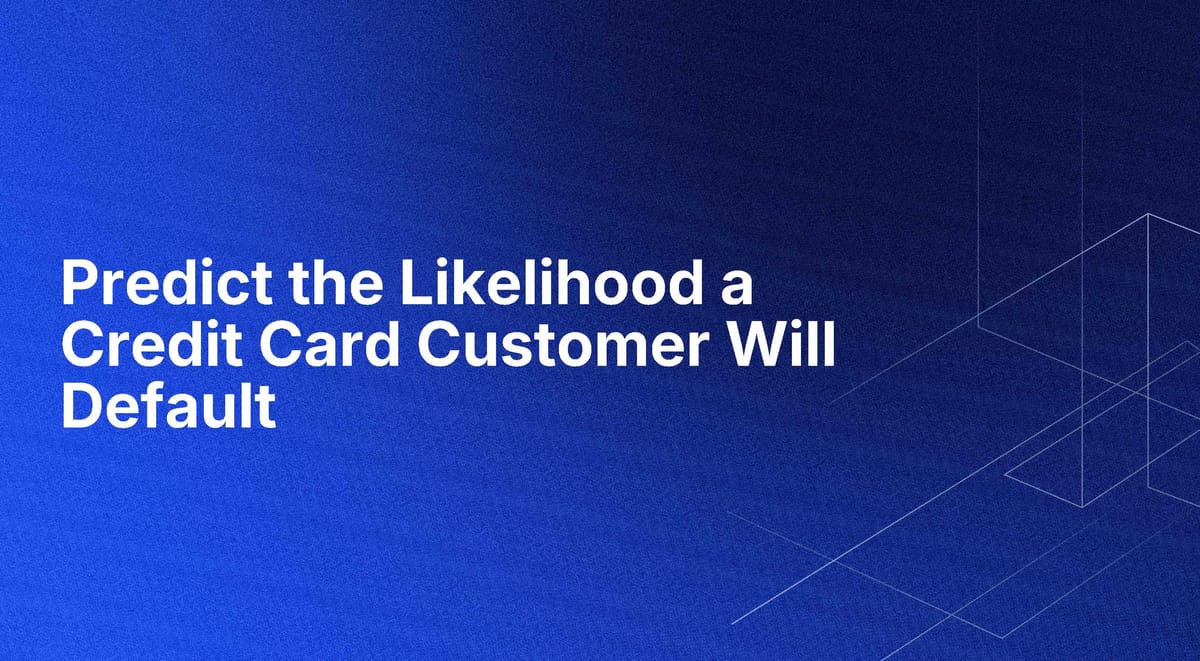Predict the Likelihood a Credit Card Customer Will Default

Leveraging AI to Enhance Credit Risk Assessment
Overview
The financial services industry, particularly the credit card sector, plays a crucial role in consumer finance by providing liquidity and credit to millions of customers. With giants like Wells Fargo attributing a significant portion of their revenue to credit card portfolios, the stakes in accurately assessing customer creditworthiness are incredibly high. Enhanced predictive models can help firms mitigate risks by identifying potential defaults before extending credit.
Problem Statement
Defaulting on credit card loans is a persistent issue that poses a significant financial threat to credit card issuers. Traditional methods of assessing creditworthiness often fail to catch all potential risks, leading to billions of dollars in lost revenue annually for financial institutions. As banks aim to expand their customer base by issuing more credit cards, the challenge lies in accurately discerning between high-risk and low-risk applicants.
Solution Overview
Generative AI offers an advanced, scalable solution for predicting the default risk of credit card customers. By analyzing historical default data, AI models can discern patterns and factors that are indicative of future financial behavior. These models go beyond the conventional metrics, such as credit scores, to consider a more comprehensive array of consumer data points. Integrating these models into the application process allows lenders to effectively filter out applicants who are highly likely to default, thereby safeguarding their portfolios. The technical implementation involves training machine learning models on extensive datasets that include features like past payment behavior, existing debt levels, income data, and even social behaviors that correlate with financial reliability. Modern AI platforms provide transparency and interpretability in these models, revealing the top factors contributing to an applicant's risk rating. This empowers financial institutions to make well-informed decisions rather than relying on opaque 'black-box' algorithms. From a business perspective, the benefits are multifaceted. By reducing the incidence of default, banks can significantly cut down on costs related to charge-offs and debt collection. More accurate credit risk evaluation also enhances customer acquisition strategies, enabling financial institutions to extend credit more confidently, thus driving revenue growth. The implementation phase would require collaboration between data scientists, software engineers, and business analysts to ensure the models are seamlessly integrated into existing credit risk assessment workflows.





